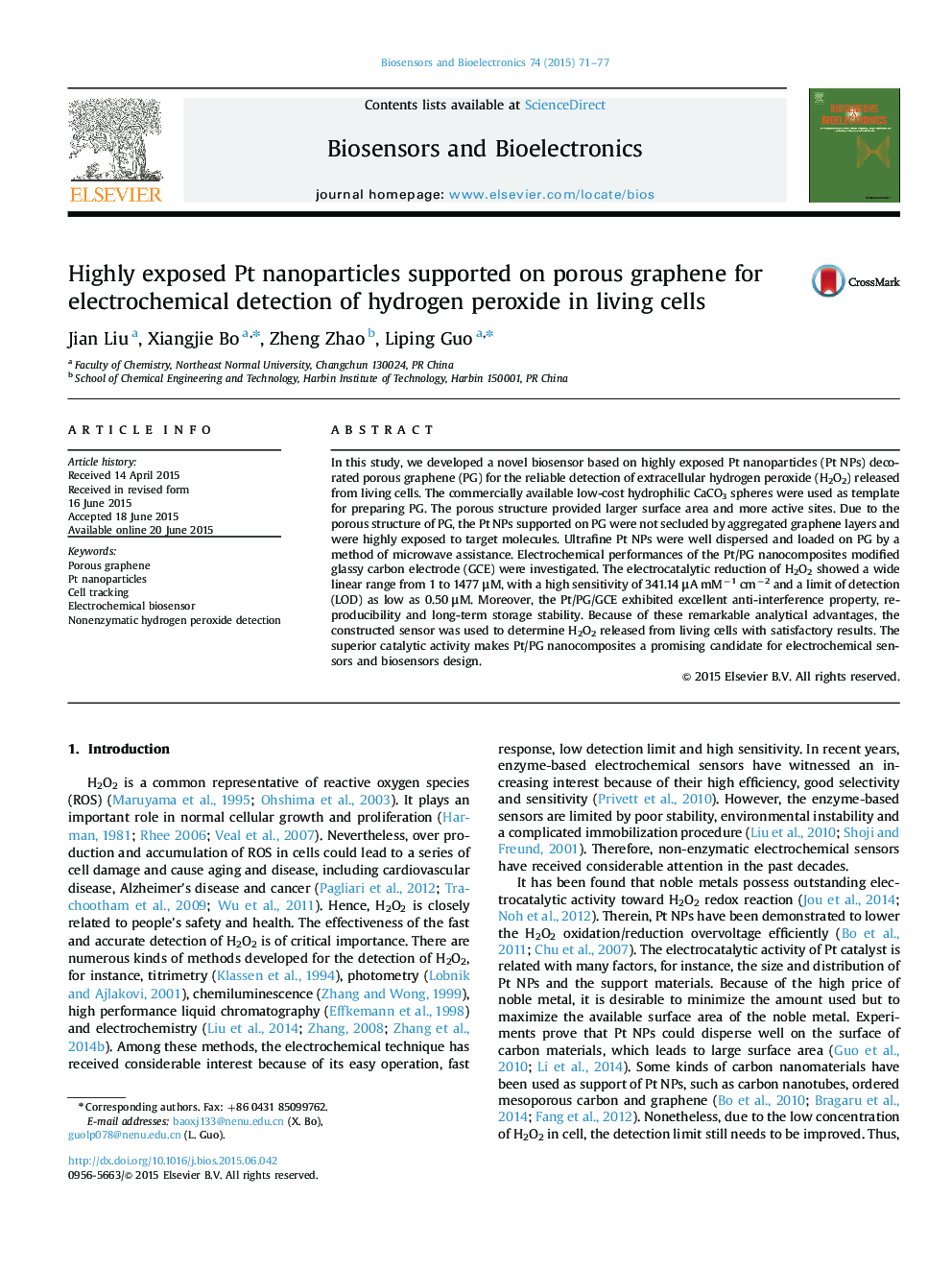| Article ID | Journal | Published Year | Pages | File Type |
|---|---|---|---|---|
| 7231559 | Biosensors and Bioelectronics | 2015 | 7 Pages |
Abstract
In this study, we developed a novel biosensor based on highly exposed Pt nanoparticles (Pt NPs) decorated porous graphene (PG) for the reliable detection of extracellular hydrogen peroxide (H2O2) released from living cells. The commercially available low-cost hydrophilic CaCO3 spheres were used as template for preparing PG. The porous structure provided larger surface area and more active sites. Due to the porous structure of PG, the Pt NPs supported on PG were not secluded by aggregated graphene layers and were highly exposed to target molecules. Ultrafine Pt NPs were well dispersed and loaded on PG by a method of microwave assistance. Electrochemical performances of the Pt/PG nanocomposites modified glassy carbon electrode (GCE) were investigated. The electrocatalytic reduction of H2O2 showed a wide linear range from 1 to 1477 μM, with a high sensitivity of 341.14 μA mMâ1 cmâ2 and a limit of detection (LOD) as low as 0.50 μM. Moreover, the Pt/PG/GCE exhibited excellent anti-interference property, reproducibility and long-term storage stability. Because of these remarkable analytical advantages, the constructed sensor was used to determine H2O2 released from living cells with satisfactory results. The superior catalytic activity makes Pt/PG nanocomposites a promising candidate for electrochemical sensors and biosensors design.
Related Topics
Physical Sciences and Engineering
Chemistry
Analytical Chemistry
Authors
Jian Liu, Xiangjie Bo, Zheng Zhao, Liping Guo,
